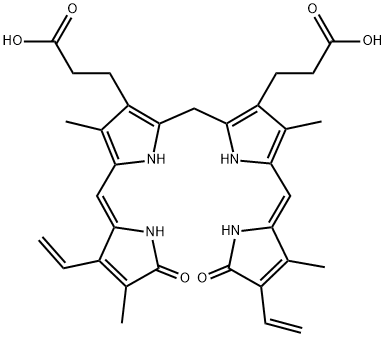What does High bilirubin level mean?
Sep 11,2024
Introduction
Bilirubin is a degradation product of heme that primarily comes from hemoglobin within RBCs as it is cleared from circulation. It is transported to the liver tightly bound to albumin (unconjugated bilirubin) and metabolized by conjugation with glucuronic acid molecules via bilirubin UDP-glucuronosyltransferase to be excreted with the bile (conjugated bilirubin). Bilirubin is a reddish-yellow bile pigment whose presence in blood serum at too high a level indicates jaundice, and its measurement is used as a liver function test.

Typically, adult bilirubin levels fall between 0.2 and 1.2 milligrams per deciliter (mg/dL). Anything above 1.2 mg/dL is usually considered elevated. For children ages 15 days to 18 years, healthy bilirubin levels should be less than 1.0 mg/dL.
Test method
Serum bilirubin measurements are routinely available in most clinical laboratories. Several analytical techniques are available to measure bilirubin and its metabolites in serum, urine, and feces. The most widely used chemical methods for bilirubin measurement are based on the diazo reaction in which bilirubin reacts with diazotized sulfanilic acid to generate colorful reaction products that can be quantified spectrophotometrically. Total bilirubin levels (conjugated and unconjugated forms) are measured in serum with the addition of an accelerator such as caffeine or alcohol, which acts to solubilize the nonpolar, unconjugated form of bilirubin. The difference between the total bilirubin concentration and conjugated bilirubin concentration (measured before the addition of the accelerator to the reaction mixture) can be calculated to indirectly provide the unconjugated bilirubin concentration. Numerous variations of this method have been developed. Enzymatic methods have also been developed to quantify total bilirubin, conjugated bilirubin, and unconjugated bilirubin fractions based on bilirubin oxidation with bilirubin oxidase to biliverdin with molecular oxygen. Although they are not commonly used in clinical laboratories, HPLC methods have been established to allow for the separation and quantification of individual bilirubin fractions.
Uses
Bilirubin testing is usually one of the tests that check the health of your liver. Bilirubin testing may be done to:
Investigate jaundice — a yellowing of the skin and eyes caused by high bilirubin levels. This test commonly measures bilirubin levels in newborns with infant jaundice.
Determine whether there might be a blockage in your bile ducts in the liver or the gallbladder.
Help detect liver disease, particularly hepatitis, or monitor its progression.
Help evaluate anemia caused by the destruction of red blood cells.
Help follow how a treatment is working.
Help evaluate a suspected drug toxicity.
Having high bilirubin can be a sign of several conditions. Your doctor will take your symptoms, as well as any other test results, into account to help narrow down a diagnosis.
Gallstones develop when substances like cholesterol or bilirubin harden in your gallbladder. Your gallbladder stores bile, a digestive fluid that helps break down fats before they enter your intestines.
Gilbert’s syndrome is a genetic liver condition that causes the liver to not process bilirubin properly, causing it to build up in the bloodstream.
Liver dysfunction: This can be any condition that affects the function of your liver and causes bilirubin to build up in your blood. This is a result of your liver losing its ability to remove and process bilirubin from your bloodstream. Examples include cirrhosis, liver cancer, or autoimmune hepatitis.
Hepatitis occurs when the liver becomes inflamed, often due to a viral infection. When it’s inflamed, the liver can’t easily process bilirubin, leading to a buildup of it in the blood.
Bile duct obstruction: Bile ducts connect your liver to your gallbladder and the opening of your small intestine, called the duodenum. They help to move bile, which contains bilirubin, from your liver and gallbladder into your intestines. Bile can’t be drained adequately if these ducts become inflamed or blocked. This can lead to an increased level of bilirubin.
Intrahepatic cholestasis of pregnancy: This is a temporary condition during the last trimester of pregnancy. It causes bile drainage from the liver to either slow down or stop entirely. This makes it harder for the liver to process bilirubin from the blood, leading to high bilirubin levels.
Hemolytic anemia: This happens when blood cells break down too quickly in your bloodstream. It’s sometimes passed down genetically, but autoimmune conditions, an enlarged spleen, or an infection can also cause it.
- Related articles
- Related Qustion
Dexamethasone is a glucocorticosteroid used in the treatment of different inflammatory conditions related to allergic disorders, skin conditions and lupus, psoriasis, ulcerative colitis, arthritis and respiratory disorders.....
Nov 13,2024APIBenzil is one of the eloquent organic compounds consisting of two adjacent carbonyl groups flanked by two phenyl rings.....
Sep 11,2024Organic reagents








